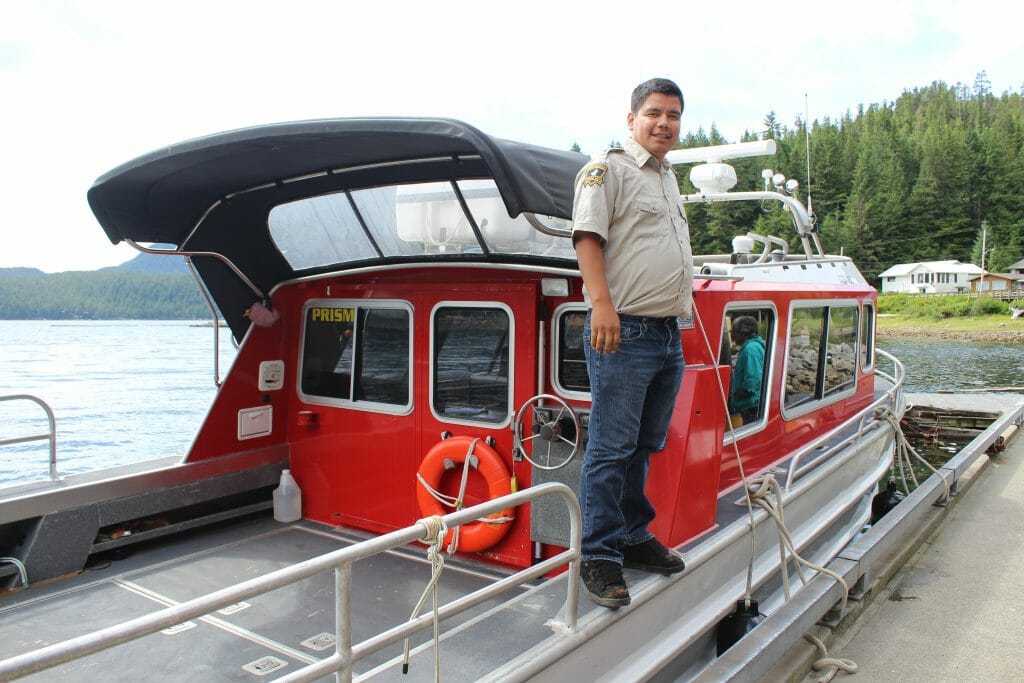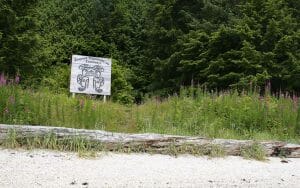Estimated Reading time

3 Mins
Coastal Guardian Watchmen Network Featured in Sierra Magazine

First Nations in the Great Bear Rainforest and Haida Gwaii, and across the entirety of what is now called Canada, have been stewarding their lands and waters for millennia. Since the onset of colonialism, Indigenous Peoples have worked tirelessly—through litigation, direct action, and diplomacy—to assert their continued role and responsibility as stewards of their territories for future generations.
Starting with the Haida Nation, and what later became the Coastal Guardian Watchmen Network, the work of monitoring and safeguarding Indigenous lands and waters by the people who know them best has recently taken the form of Indigenous Guardian programs.
The pivotal work of Coastal First Nations in laying the groundwork for Indigenous Guardian programs that now span the country was featured in a recent article by Sierra Magazine.
Author Heather Smith explains how, following a successful and multi-pronged effort to block clear-cutting on Haida Gwaii in the 1970s and ’80s, the Haida established one of the earliest modern Guardian programs. Smith explains that, “When tourists, lured by tales of the Great Bear Rainforest and totem poles in the mist, began appearing at Haida Gwaii’s sacred places, the Haida took shifts patrolling and camping at the sites.”
In the 1990s, following lengthy cross-national discussions, the Haida began collaborating with other First Nations in coastal BC, ultimately forming the Coastal First Nations Great Bear Initiative with the goal of undertaking coast-wide marine and forest stewardship initiatives. Subsequently, in 2005, the Coastal Guardian Watchmen Network—a nine-member alliance of First Nations along BC’s North and Central Coast and Haida Gwaii—was established to solidify and expand the role of local stewardship programs.
Guardian Watchmen are often referred to as the “eyes and ears” of the land and sea. They are hired by their nations to serve as stewards and protectors of their lands and waters, and can now be found along the Central and North Coast of BC, as well as other parts of Canada.
As described by the Coastal First Nations Great Bear Initiative: “Coastal Guardian Watchmen play a critical role in […] ensuring resources are sustainably managed, that rules and regulations are followed and that land and marine use agreements are implemented effectively.” Their collective vision speaks to regional collaboration in order to “monitor, protect and restore the cultural and natural resources in [their] territories,” according to the authority and jurisdiction of elected and ancestral laws governing their lands.
Guardian Watchmen programs are key to asserting Indigenous sovereignty over the ecological and cultural management of their territories. Ross Wilson, stewardship director for the Metlakatla First Nation, is quoted in the Sierra Magazine article in describing how, “When our province comes and says, ‘We are going to put this in this specific area,’ we can say, ‘No, our land plan doesn’t say that. By the way, it’s under conservancy. By the way, we have a management plan for that.”
When our province comes and says, ‘We are going to put this in this specific area,’ we can say, ‘No, our land plan doesn’t say that. By the way, it’s under conservancy. By the way, we have a management plan for that.
The measurable impact of Indigenous stewards in ensuring ecological sustainability is receiving growing recognition from around the world. A recent study from the University of British Columbia, for example, found that biodiversity is highest on Indigenous-managed lands, when compared to non-protected areas. As Heather Smith explains, “The work that Indigenous guardians do is in keeping with the UN-backed scientific consensus that Indigenous people are better at protecting biodiversity in their communities than outsiders.”
Since their inception by the Haida in coastal BC, Indigenous Guardian programs can now be found across the country, such as the Inuit Guardians in the Gjoa Haven hamlet of Nunavut, the Misipawistik Cree Guardians in Manitoba, and the Miawpukek Nation Guardians in Nova Scotia, amongst many others. This interactive map, featured on the Indigenous Guardians Toolkit website, illustrates the ongoing proliferation of Indigenous Guardian programs from coast to coast to coast.
______________________________
Establishing the Gwa’sala-’Nakwaxda’xw Guardian Watchmen Program

“We are one with the land and sea we own,” states the guiding principle of Oweetna-kula, a concept that has directed Gwa’sala-’Nakwaxda’xw Nations’ relationship to their territories since time immemorial.
When a forced relocation removed the Nations from their homelands in 1964, that sacred connection was broken. Decades later, when Coast Funds was created, the Nations arranged to create a Guardian Watchmen program and reconnect to their territories.
Today, the Gwa’sala-’Nakwaxda’xw Guardians play an integral role in stewarding the natural and cultural resources of their lands and waters while supporting community members to revive relationships with their homelands.
Learn more about how the Gwa’sala-’Nakwaxda’xw Guardian program is helping strengthen the Nations’ stewardship practices and cultural connections.
